On Sunday evening at Wembley Stadium, England will take on Italy in the final of Euro 2020. Italy successfully navigated their way through a difficult knockout stage, beating Austria, Belgium and Spain, all after topping a group made up of Wales, Switzerland, and Turkey. Italy had managed to outscore every opponent in the tournament until their 1-1 draw with Spain in the semi-final, which was settled from 12 yards out. This game represented their second game of the competition which went to extra time, after their Round of 16 win over Austria.
England topped a group which included Croatia, Czech Republic and Scotland, drawing against the latter. In the knockout stages, the English beat Germany, Ukraine, and squeezed past Denmark in extra time in their own semi-final. This tactical analysis looks to give a preview of some of the tactics we may see used in Sunday’s fixture, giving an analysis on one or two aspects from each side.
Lineups and formation
It’s unlikely we’ll see either side make any kind of shift from the way they lined up in the semi-final. Neither side is expected to have any players who started in the semi-finals unavailable, whether due to suspension or injury.
As a result we will see both sides field a version of a 4-3-3. The key difference will be England using a double pivot, with Declan Rice and Kalvin Phillips sitting behind Chelsea’s Mason Mount. Opposing this, Italy will likely use a single pivot, with Jorginho fulfilling that role. Nicolo Barella of Inter Milan, and Paris Saint-Germain’s Marco Verratti sitting in front. Both sides will also likely employ a slightly lopsided formation with their left-backs pushing forward. The impact of both of these players pushing forward will be examined in more detail later on, but both Luke Shaw and Emerson Palmieri will take very high positions in attack, whilst Kyle Walker and Giovanni Di Lorenzo, both of whom will likely fulfil the right-back role, are likely to play in a slightly narrower and more reserved role.
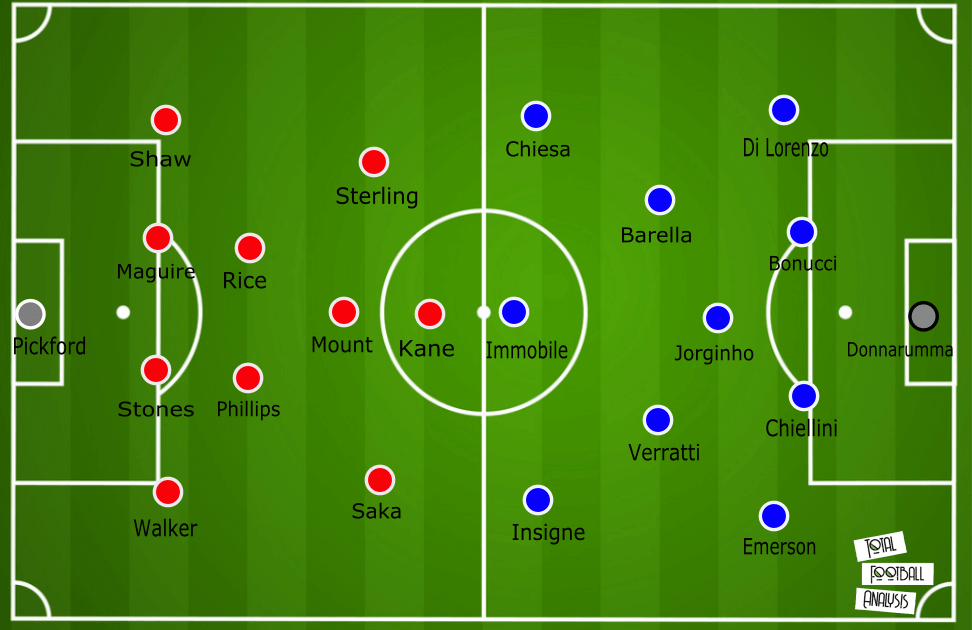
Shaw and Sterling
It remains to be seen whether Gareth Southgate pursues with playing Sterling on the left and Saka on the right, but if he does, Shaw and Sterling are likely to represent England’s most consistent threat on the Italian goal on Sunday.
Against Denmark in the semi-final, 21 of England’s 41 positional attacks emerged from the left flank. And whilst a greater level of xG chances arose from their central attacks, we can clearly see from looking at the image below that they preferred to use the left side to structure the majority of attacks.
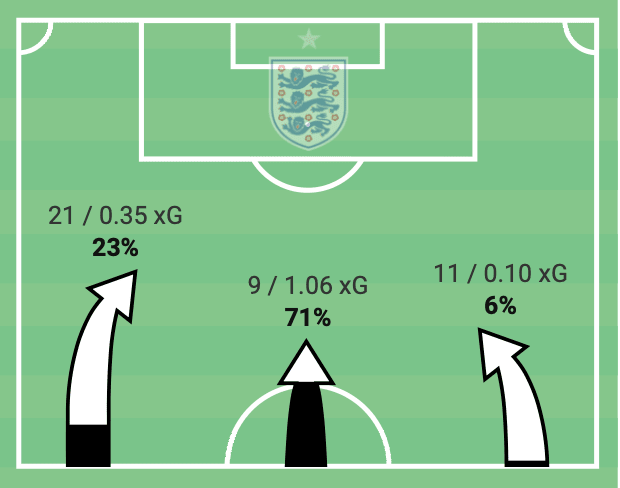
There isn’t anything revolutionary that England are doing with these two players, rather just allowing both players the freedom to play a key role in their attacks.
Shaw completed four of his nine crosses in the semi-final and he will likely put in a high number once more this weekend. With Kane up front, the England captain represents a natural target for crosses, but also anything that isn’t cleared properly by the Italians will represent a danger with Kane lurking in the box.
Shaw is an intelligent crosser, and adapts to the positioning of his attacking players. In the image below, Shaw recognised that Kane was outside the area and that there was no realistic aerial threat for England. Adapting to this situation, Shaw instead picked out Saka with a pinpoint pass at the edge of the box. We can see this pass in the image below, but what this image also shows is the type of position Shaw is going to regularly take over the course of the game to deliver from, or at the very least support Sterling from.
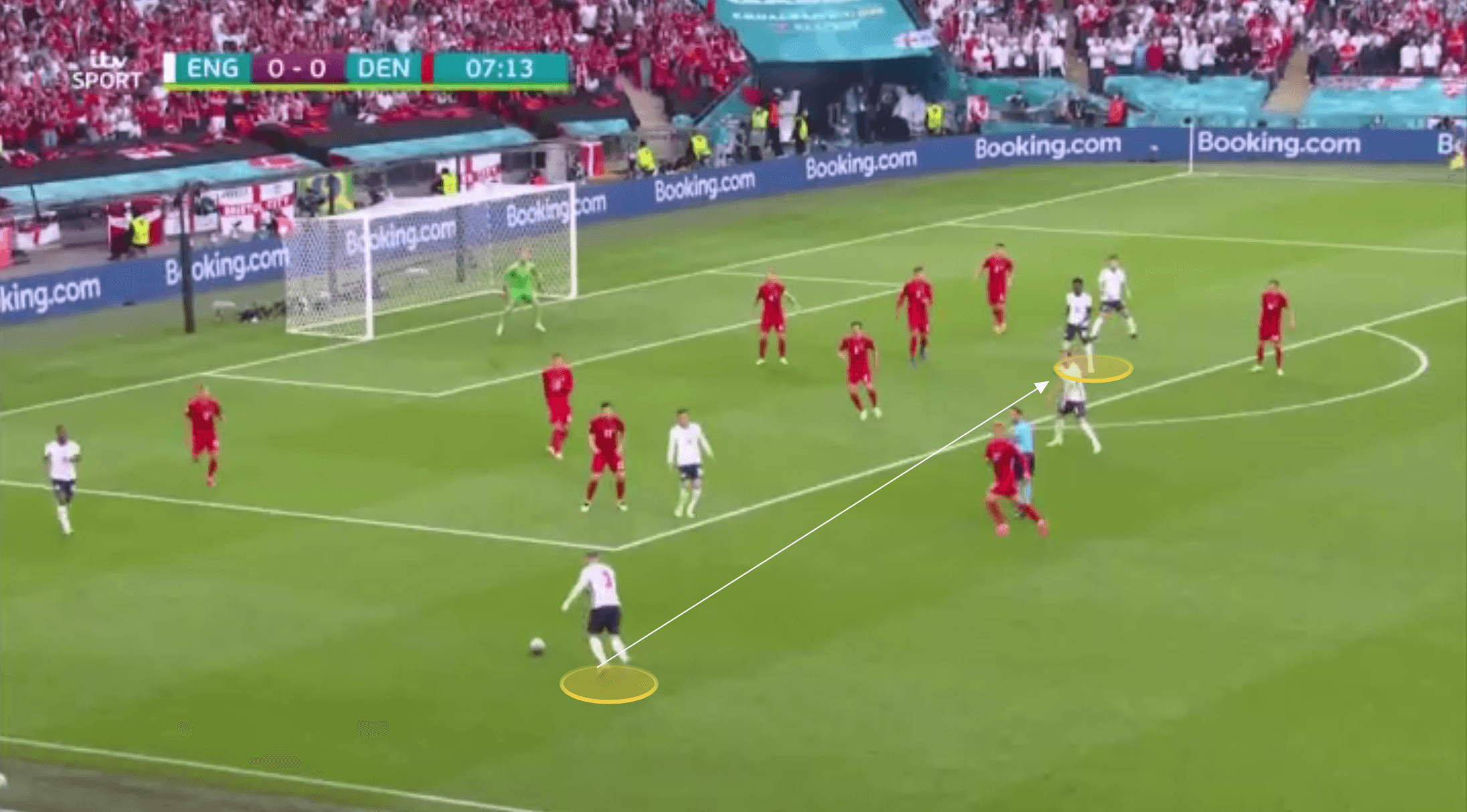
England will play with a compact and narrow shape behind the ball in attack, as we can see in the image below as Rice squares the ball with Phillips, Maguire, Stones, and Mount close together, providing protection against the counter-attack. However, ahead of them, both full-backs push high on either flank, allowing Sterling and Saka to play as a more compact front three. This has the impact of narrowing the opposition defence and leaving more space out wide for the full-backs.
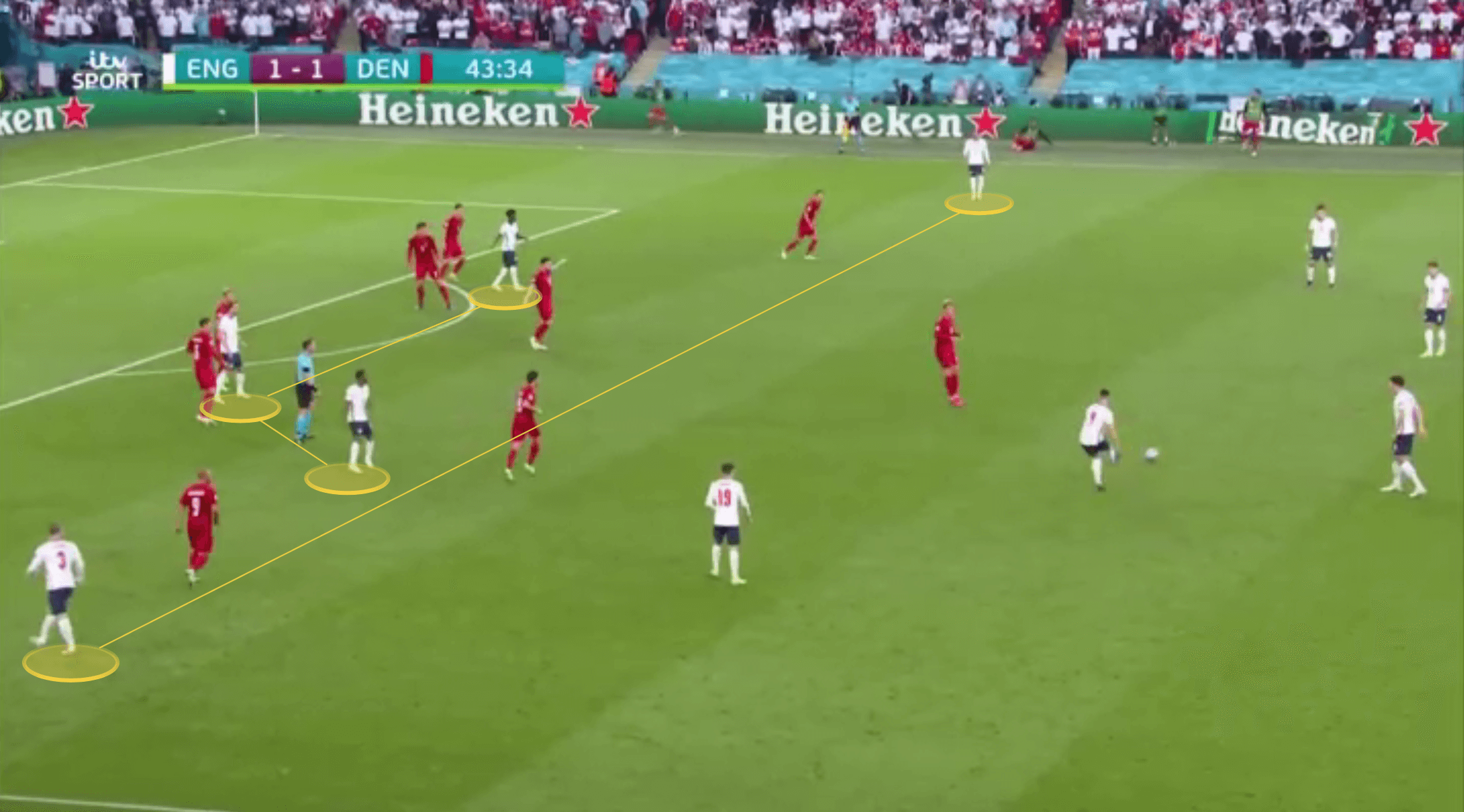
Sterling is having an incredibly impressive tournament as an individual and he was outstanding against Denmark. In that game he attempted a total of 17 dribbles and completed 11 of these. Italy will be wary of the impact Sterling can have, and his directness in attack will likely garner the attention of more than one italian defender, potentially opening up more space for Shaw to have an impact himself on the left flank.
Sterling will often start with a slightly more narrow position regardless of Shaw’s own position. By starting narrow, Sterling is firstly in a compact shape ready to counter-press should the ball be lost trying to play past the opposition’s back four. However, more importantly, it impacts his attacking movements in the final third, benefiting him as a starting point regardless of what decision he makes.
As Kane receives the ball centrally in the image below, Sterling immediately peels away. By starting narrow, he is able to draw the opposition right-back out with him.
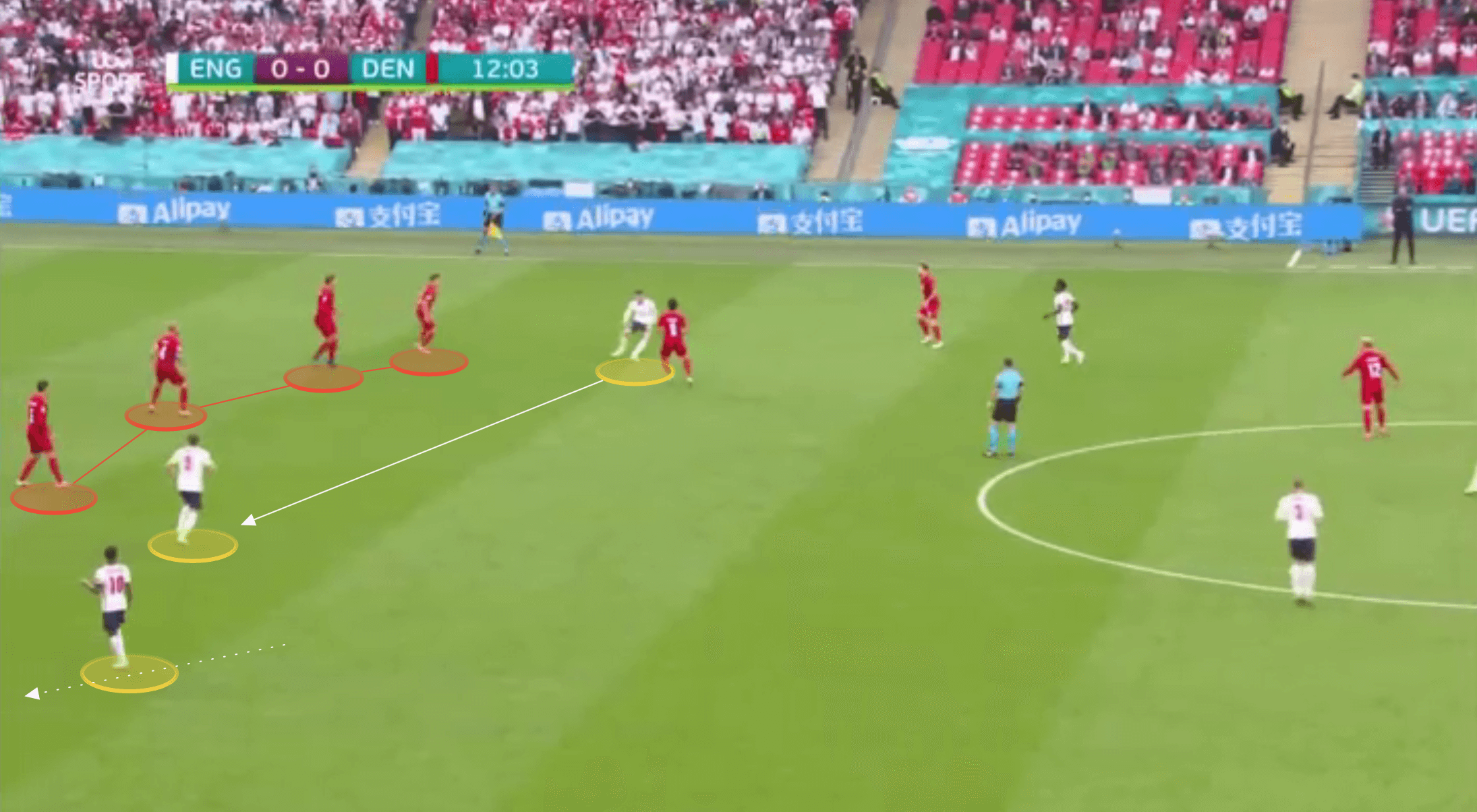
If the right-back does get drawn out it leaves more space for Kane to play a through pass through the middle of the pitch, and it also allows Sterling to isolate the full-back momentarily in a 1v1 duel. This isn’t a preferable situation for the full-back.
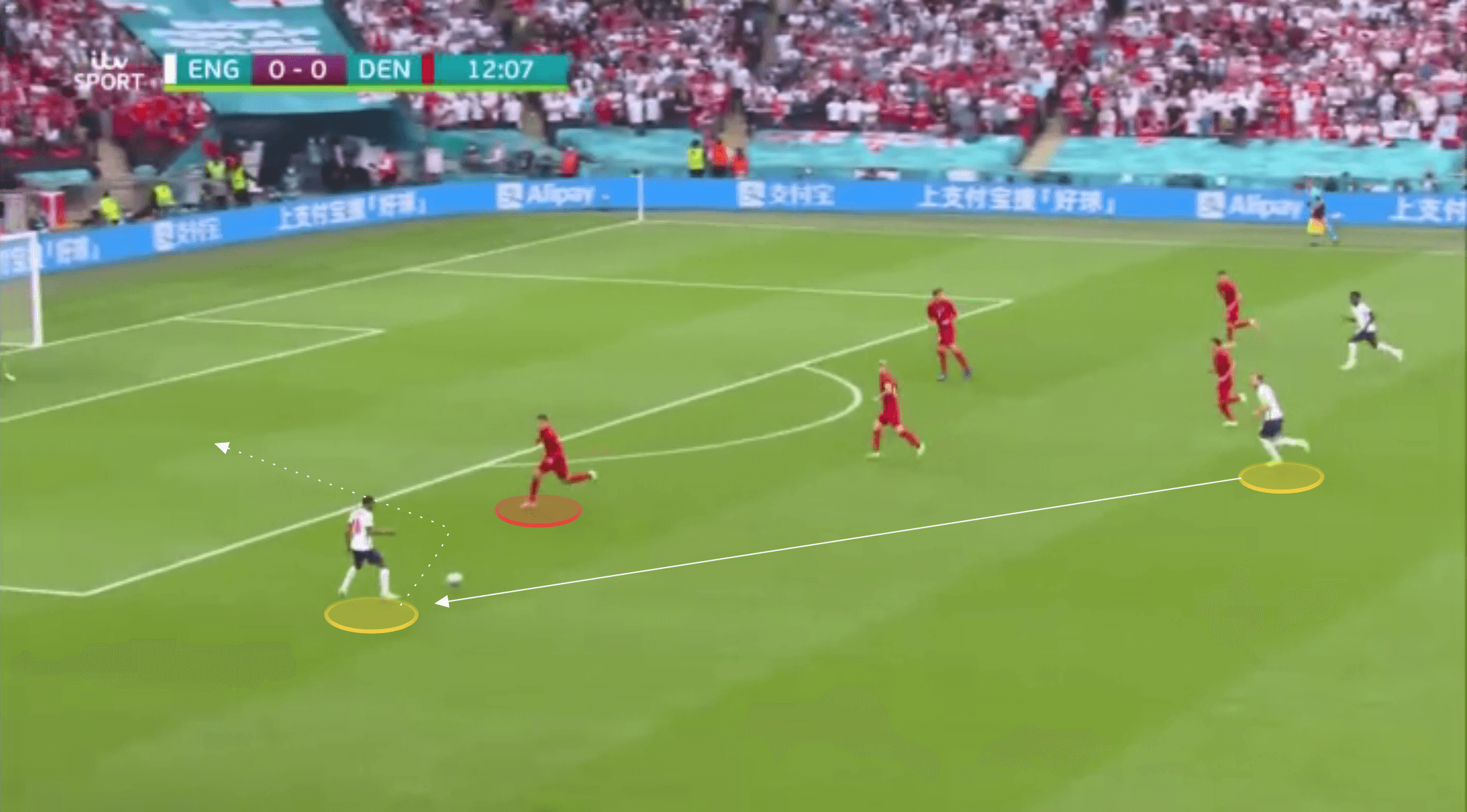
If play is advanced down the right side, as it did for the chance in the first half where Kasper Schmeichel saved from Sterling from six yards out, it means Sterling is in a great position to make a late run into the box from. It gives Kane more freedom too to be able to make runs in behind and act as a creator rather than as the sole goal threat.
Below Kane is played in behind by Saka and Sterling is able to move into the box from his narrow starting position.
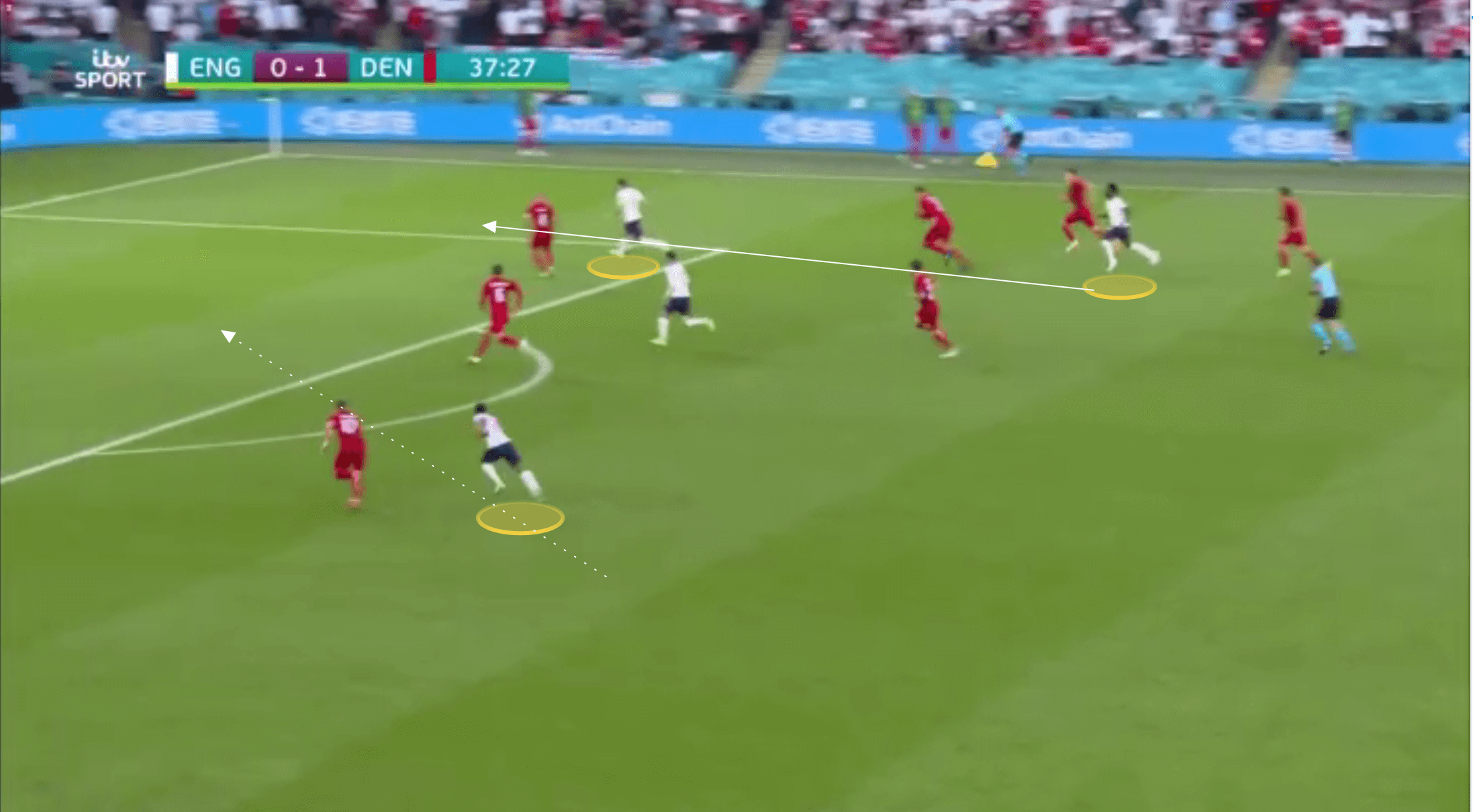
Due to his outstanding acceleration, few defenders are going to keep up with Sterling in a foot race, which makes him such an attacking threat from this kind of position.
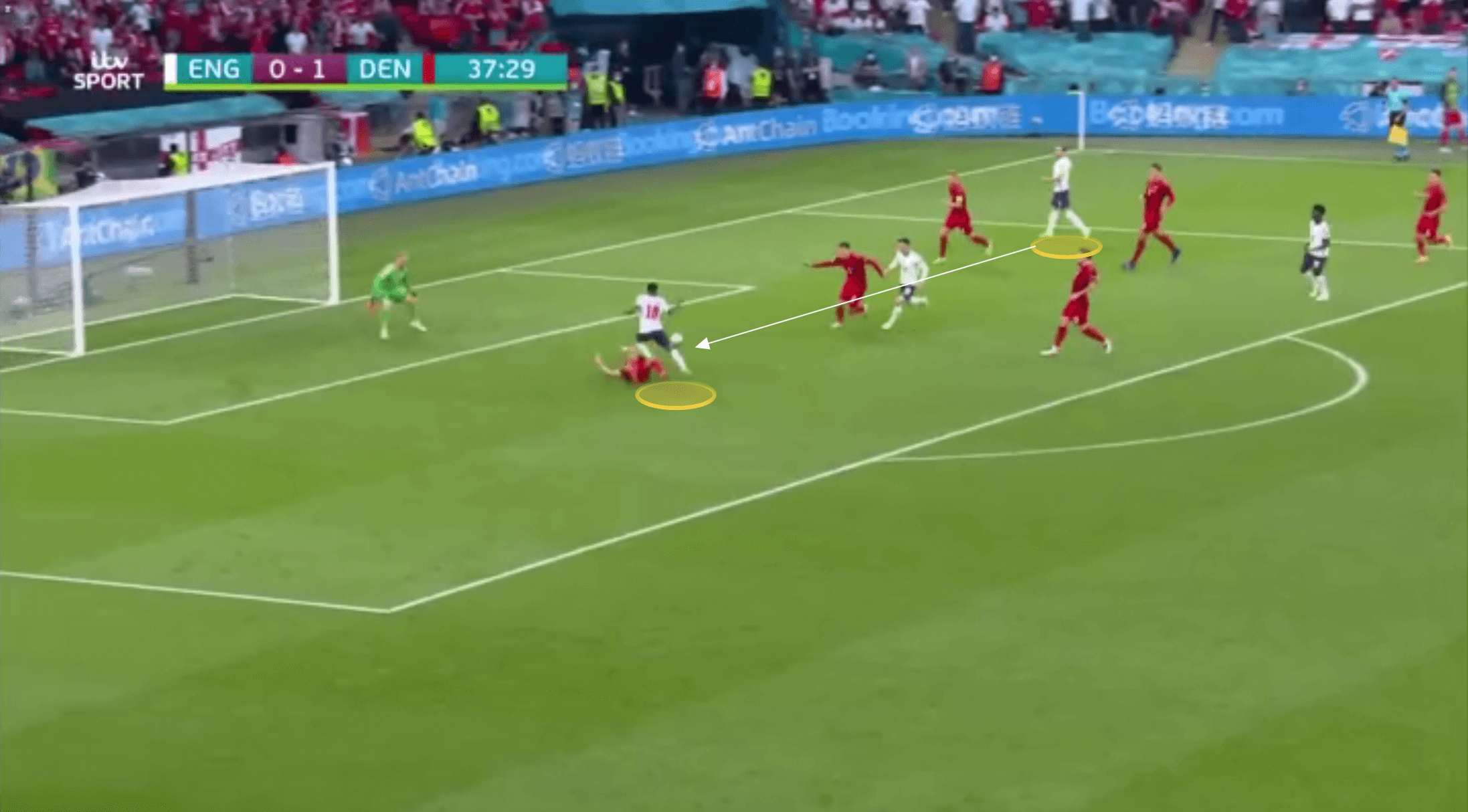
Italy’s swift attacks
Italy have generally averaged slightly more possession than their opponents in their Euro 2020 games so far, however, against Spain they opted to concede possession and hurt the Spanish with quick, direct, counter-attacking football. It’s unlikely they’ll take this exact approach against England, given they had only 30.6% possession against Spain, but even against Belgium, where they minimally enjoyed more possession, they showed how quickly they can turn build-up play into a goal scoring situation with Lorenzo Insigne’s goal just before half-time to make it 2-0. They will look to continue to use the pace of their front three, and the attack-minded left-back Emerson Palmieri, to structure direct attacks.
Just as we saw Shaw do in the previous section, Palmieri pushed high on his left flank (number 13 in the image below), compared to the right-back Di Lorenzo (2).
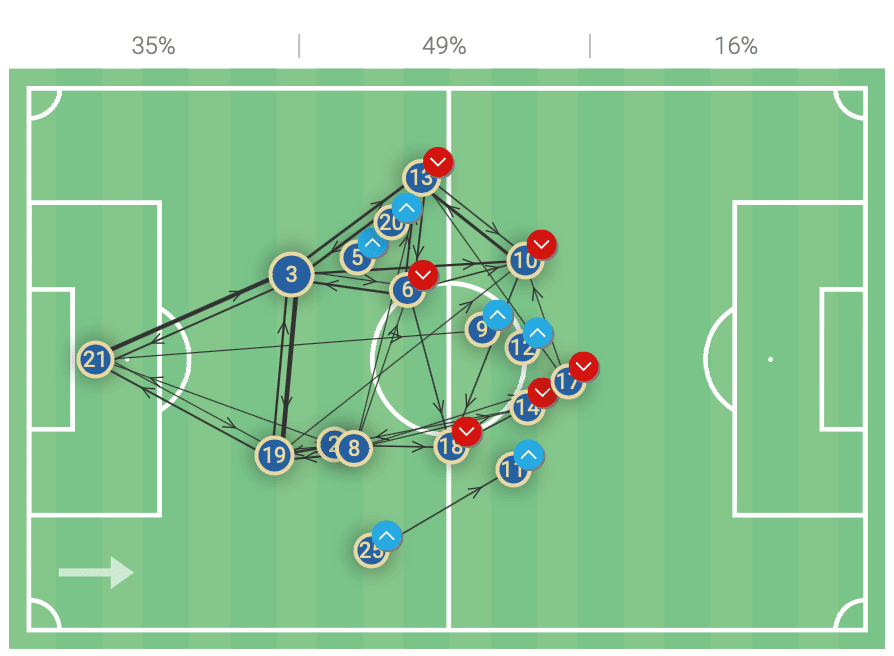
Emerson will look to overlap with Insigne driving forward. Below Insigne received a diagonal pass from Girigio Chiellini and Emerson quickly pushed forward to isolate the full-back.
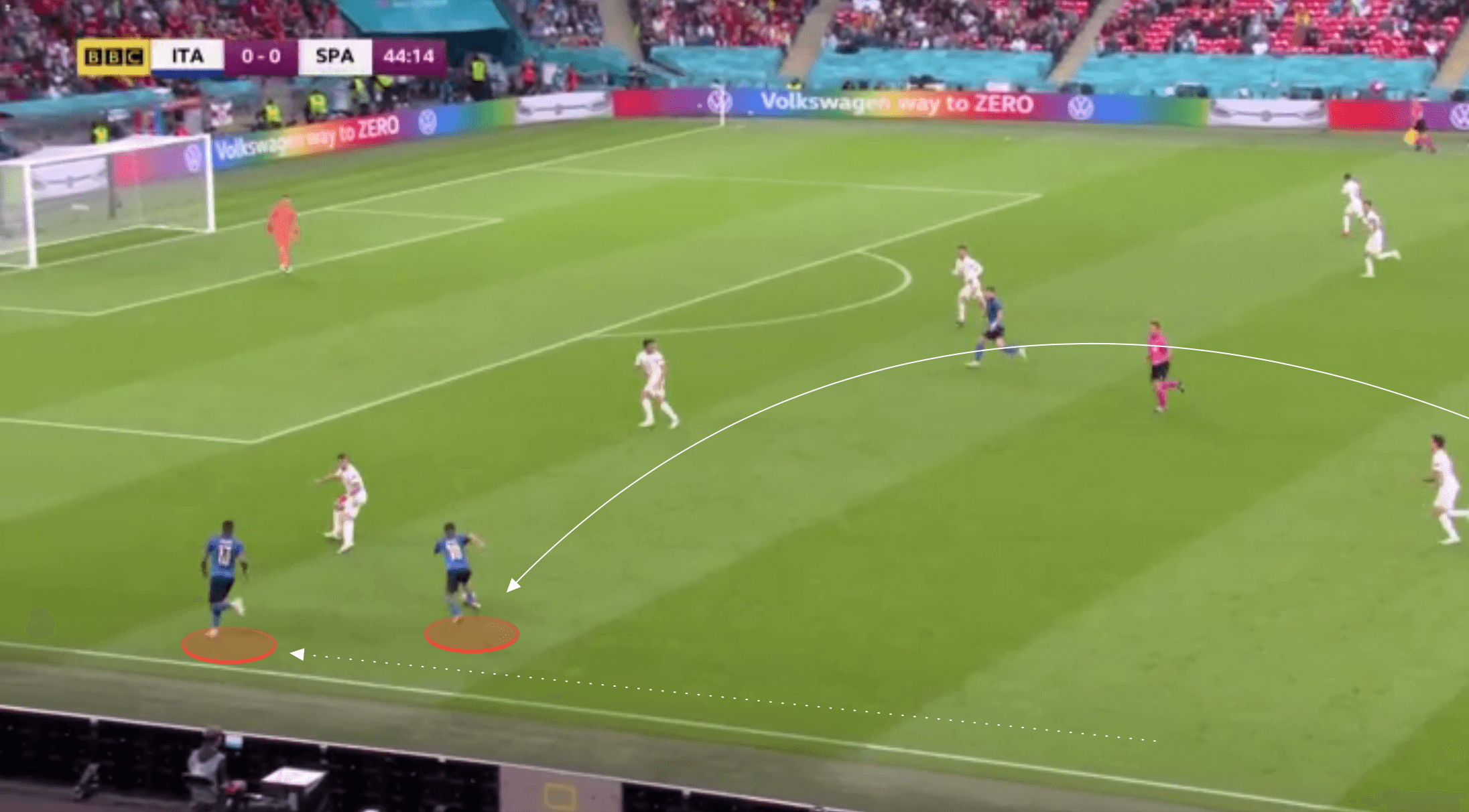
It will be interesting to see if Italy look to use this method of attack once more. England will be well suited to deal with it, with Kyle Walker being one of the quickest players in the tournament. If Bukayo Saka continues at right wing, England will make use of his work rate to support Walker and prevent this 2v1 overload from occurring.
Ciro Immobile has had an excellent tournament, and along with Federico Chiesa and the aforementioned Insigne, Italy’s front line isn’t short of pace. Against Spain we saw them work the ball from Donnarumma into a goal scoring opportunity with 3 passes (all played on the floor). The Italy keeper will look to play the ball forward quickly after making a save and he very quickly found Verratti, who immediately helped the ball forward to Insigne on the left wing. We can see this pass pattern happening in the subsequent image, as Immobile then runs through the Spanish defence to receive a through pass in the space behind.
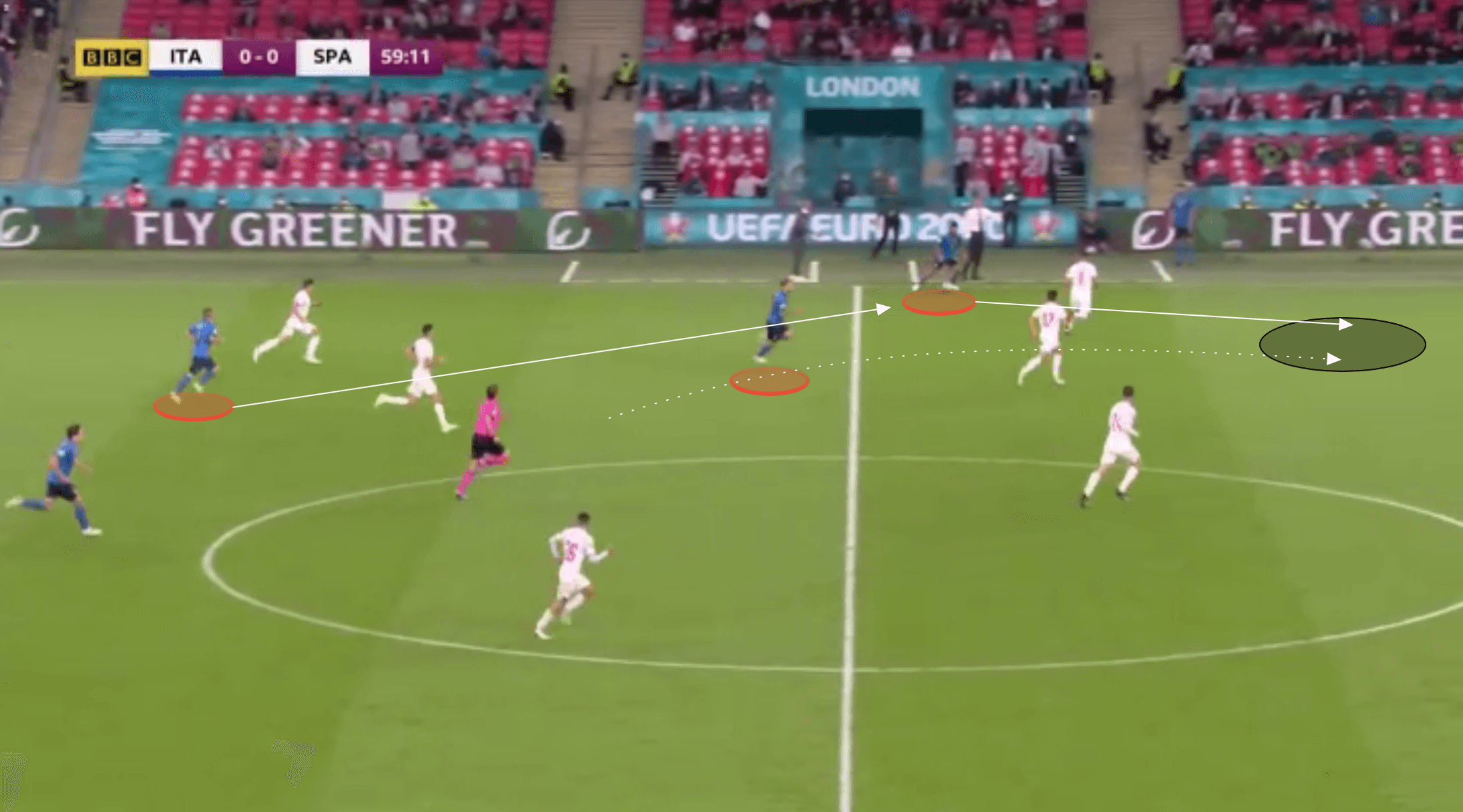
If Walker is drawn over to deal with Insigne in this moment, then that leaves Stones and Maguire to deal with Immobile’s forward runs, and whilst they have both been exceptional in this tournament so far, this will prove no small feat.
Italy’s compact defensive structure
Italy operate in a fluid 4-3-3 out of possession, which can quickly become a 4-4-2 or 4-5-1 depending on the positioning of the ball and the actions of the opposition full-back.
We can see the initial set-up of the defensive shape seen below with their three midfielders and three forwards positioned closely together, providing little space for the Spanish midfielders to have time on the ball in the centre of the pitch.
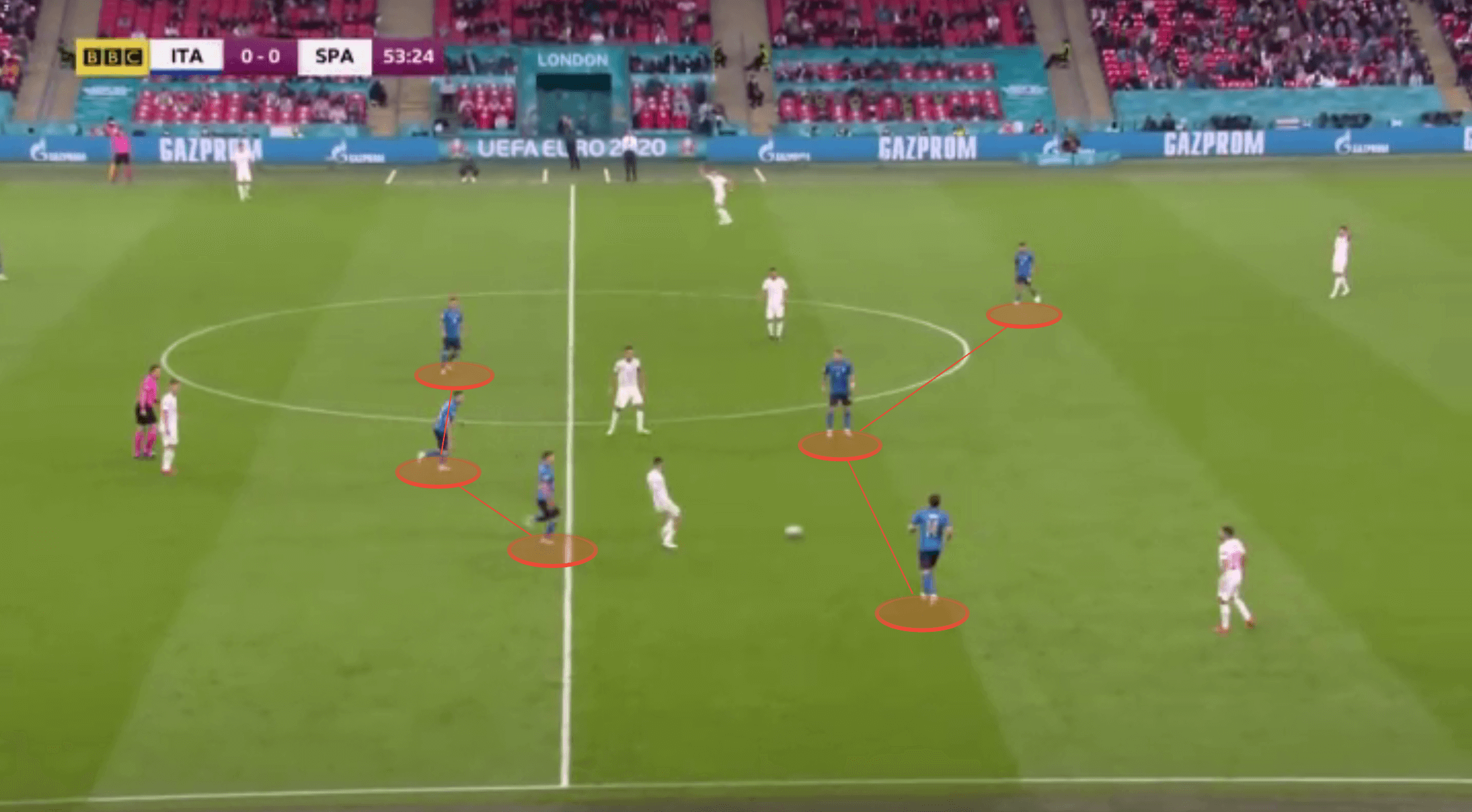
As the ball is circled wide, Chiesa may drop into the midfield to provide balance as the three shift across in reaction to the switch of play, whilst Insigne and Immobile ensure the distance between themselves and their midfield remains compact, dropping deep to do so.
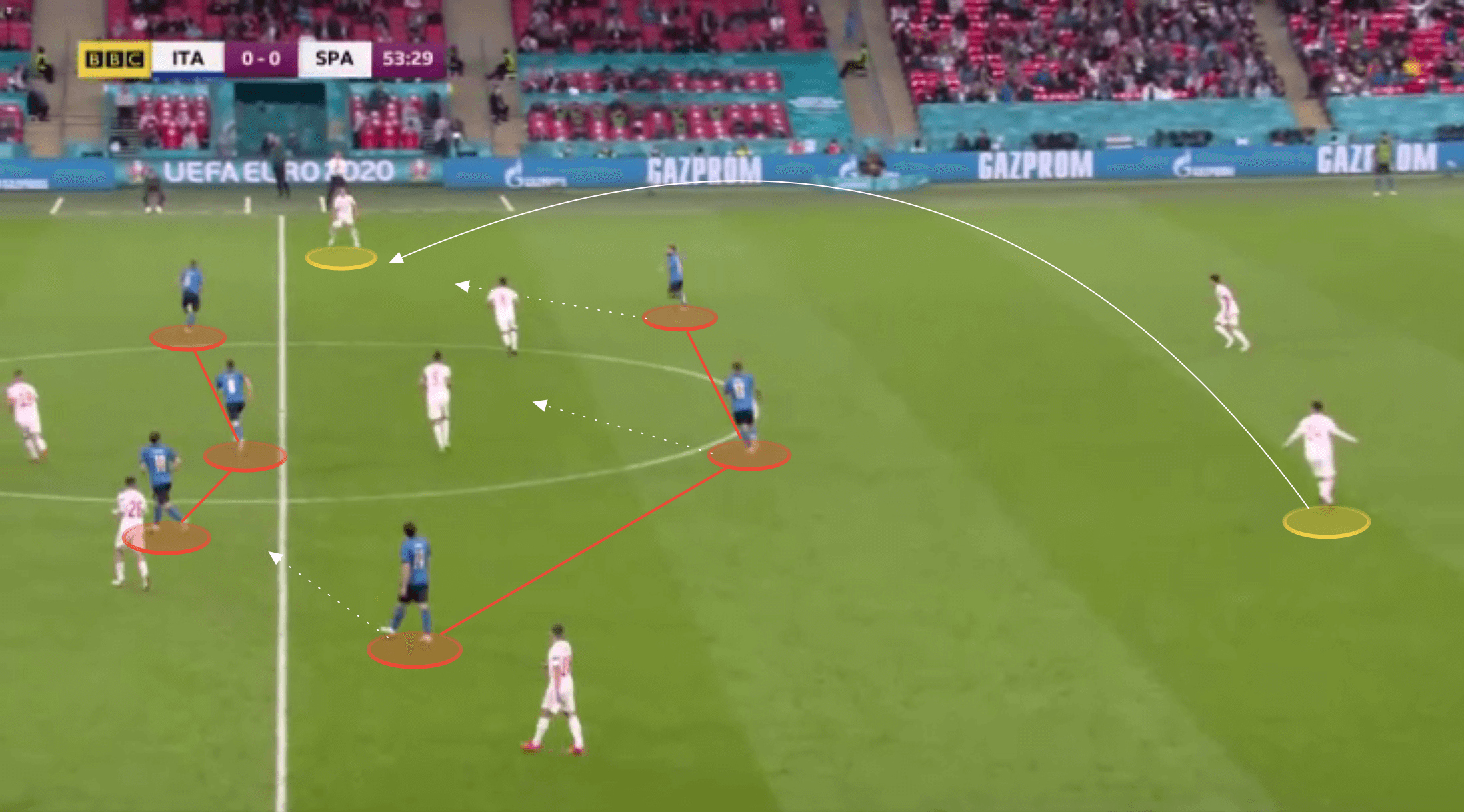
Yet as the ball is worked back into the centre of the pitch once more, Italy fall back into a deep 4-5-1, with Chiesa dropping back to track the opposition left-back. We can see how Chiesa and Insigne fall either side of their midfield three, allowing them to stay compact, whilst Immobile doesn’t’ stray far from his midfield, and even though he’s working by himself, maintains a position to prevent the opposition pivot from getting in possession.
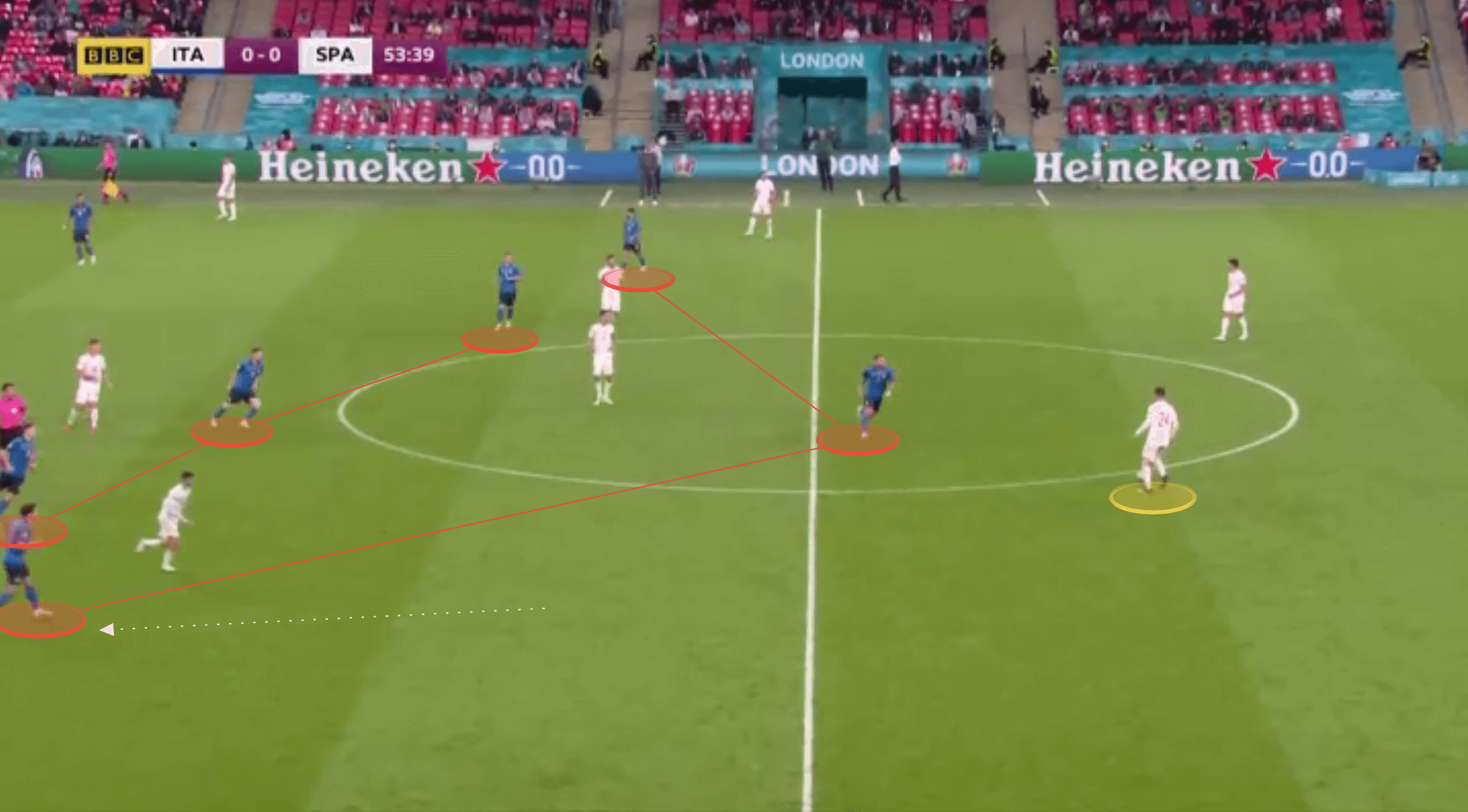
Italy’s defensive shape will prevent England from getting prolonged periods of possession in the centre of the pitch, and it will force them to play wide. This may not be of too much concern for Southgate, given the threat already highlighted on England’s wings.
Nevertheless, Italy will get players behind the ball as the attack advances, and anything in and around the 18 yard-box they will look to crowd. This will make it difficult for Kane to impact the game in deeper areas as he likes to do, or get regular shots away from that 18 yard distance.
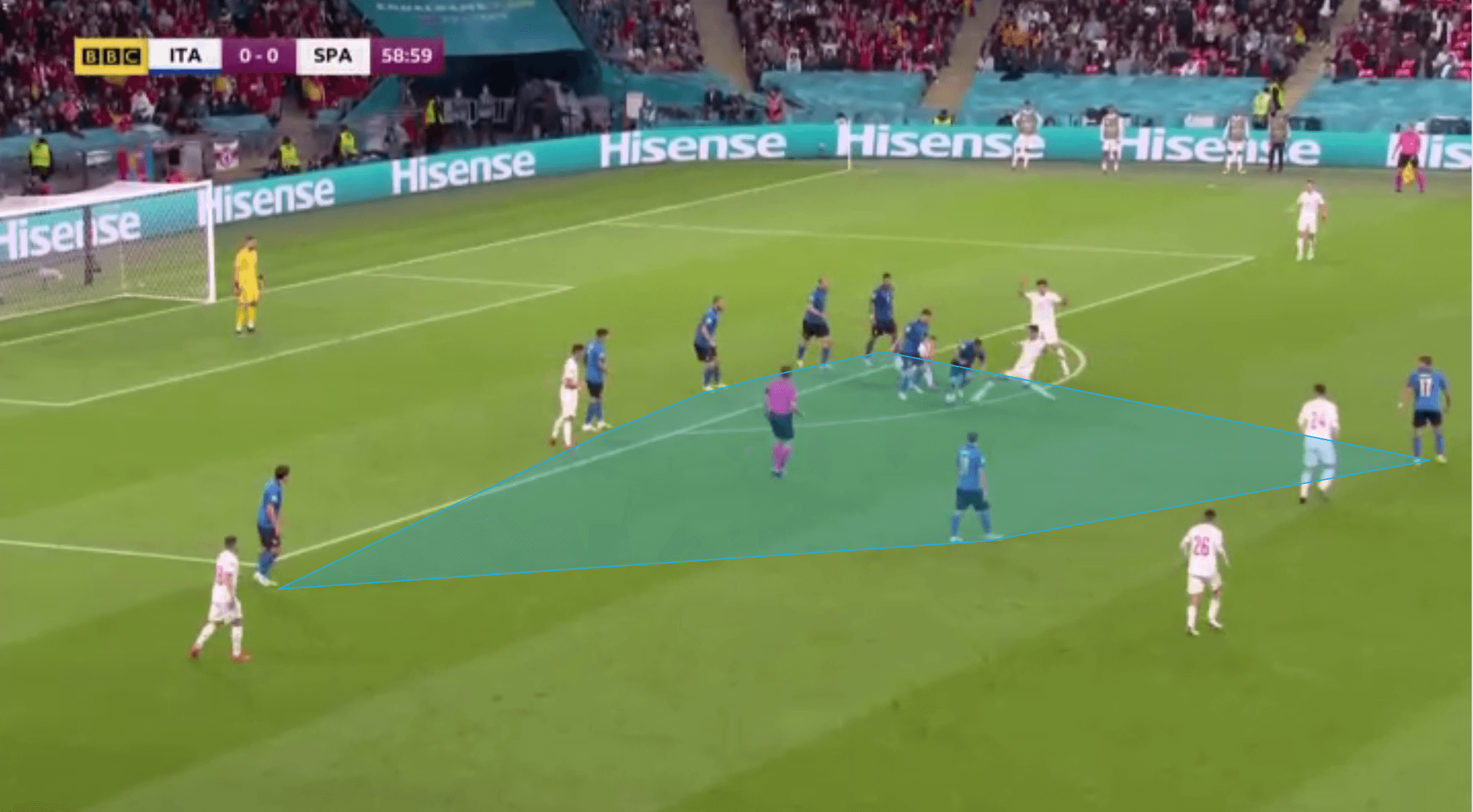
In the Denmark game, England showed a desire to push the ball forward with urgency at times, and this might be needed against Italy. Maguire drove forward with the ball before Denmark could set their defensive shape early in the first half, to great effect, as we can see in the image below.
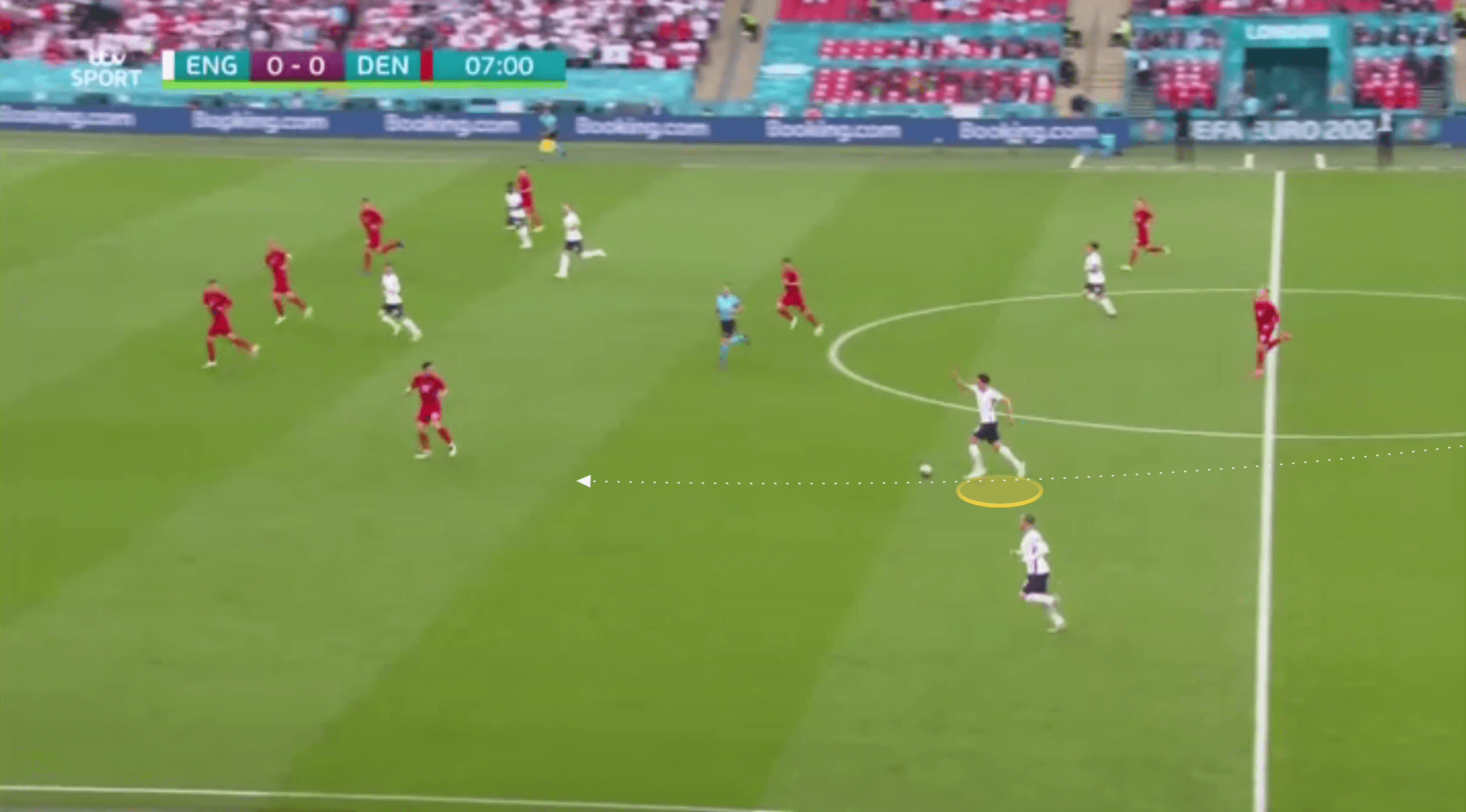
The centre-back was able to progress the ball quickly by himself, driving straight through the centre of the pitch, before finding Sterling, who drifted out wide to the left flank as a reaction to Maguire’s run. Again, this allowed Sterling to isolate the full-back, and with space behind the defender to attack.
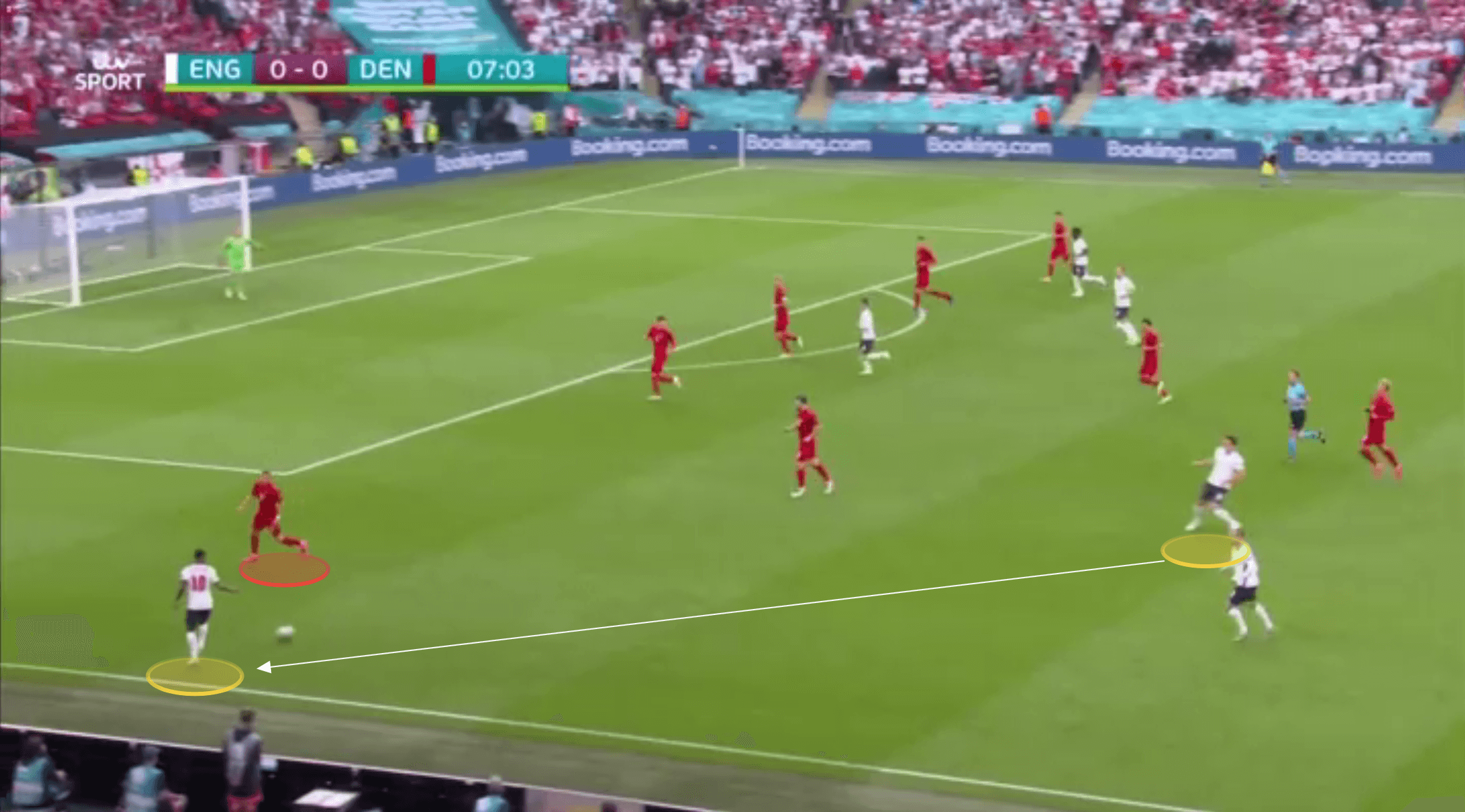
Conclusion
After keeping three clean sheets in their group games, Italy have conceded a singular goal in each of their knockout games, whilst England are yet to concede from open play. Both sides have been outstanding defensively throughout the tournament and we’re likely to see a close game in the final. Italy’s compact defensive shape which does a terrific job of crowding the centre of the pitch will make life difficult for the likes of Mason Mount and Kane, so the creative burden may well fall on England’s wide players once more. On the flip side, Walker will need to play with restraint and have a strong game to deal with the threat of Italy’s quick attacking trio and the team’s ability to play so quickly from Donnarumma into the front line, and garner a legitimate goalscoring opportunity.





Comments